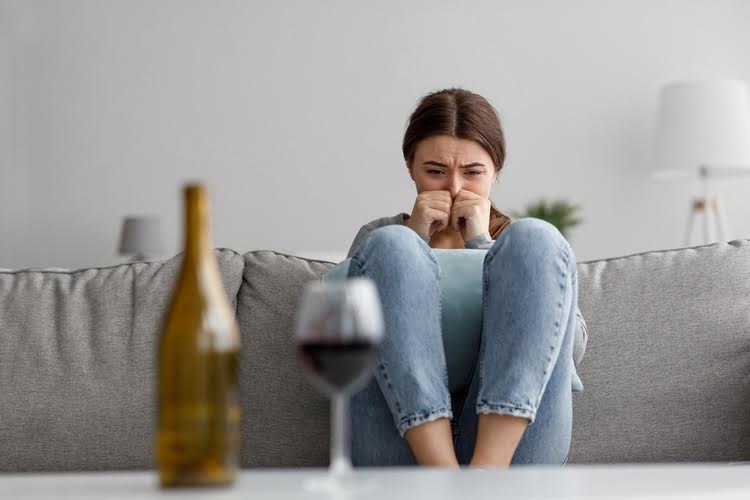This approach, referred to as parallel treatment, has been frequently employed in settings such as VA Medical Centers where there are specialized clinics for treatment of PTSD and substance use disorders. While preferable to sequential treatment, patients typically receive PTSD and alcohol use disorder treatment from different providers and clinics, which can result in an uneven and confusing approach. In recent years, there has been a movement toward the development of truly integrated treatments that address the interrelatedness of PTSD and substance use (Karlin et al., 2010).
Understanding the Link Between Trauma and Alcoholism

However, as you make the adjustment to drinking less or going alcohol-free, you’ll notice a transformation in your alcoholism symptoms “whys.” You’ll find yourself sleeping better, feeling more in control, and experiencing a deep sense of pride in your journey. Understanding that problematic drinking exists along a broad spectrum can empower people to seek help proactively. Positive change comes in various forms, from seeking therapy to explore healthier coping mechanisms to finding support within peer networks and educational resources. COPE (Concurrent Treatment of PTSD and Substance Use Disorders Using Prolonged Exposure) is a therapy that blends trauma-focused PTSD treatment with substance use treatment. Studies of COPE with Veterans and civilians have shown this integrated treatment improves PTSD symptoms. Research suggests that for most people who have both PTSD and problems with alcohol or drug use, PTSD develops first.
Behavioral Treatments for Comorbid AUD and PTSD

And all too often, as in Ryan’s case, it reflects displacement, directing anger toward a target that is not the source of an individual’s original anger. Under the influence of alcohol, those already predisposed toward anger may vent or, more seriously, direct their anger toward a target that might be experienced as less threatening than the original target. Many people enjoy alcoholic drinks as a way of relaxing, sometimes to reduce the tension of socializing or to quiet an overactive mind. By contrast, some individuals’ alcohol consumption contributes to their anger, hostility, and even aggression. In his case, he was already predisposed to anger arousal before he had his first drink. If you have a drinking problem, you are more likely than others with a similar background to go through a traumatic event.
PTSD: National Center for PTSD
It will help you process trauma, stop drinking, and learn new, healthier coping mechanisms going forward. Studies have shown that a traumatic stimulus triggers people with PTSD and an alcohol use disorder to crave alcohol. When those people are presented with a neutral stimulus, there is no increase in cravings. An important recent study found that male and female lab animals with both conditions exhibit different symptoms and brain changes.
Understanding the Relationship Between PTSD and Alcohol Use
“Whether it’s through the therapists or even the plants themselves showing us these particularly traumatic experiences and then releasing the negative impacts and instead seeing the way that it fits into the big picture of our lives,” he said. He now works often with psilocybin, both personally consuming it and leading fellow veterans through experiences as a shaman. He does that under the protection of the Religious Freedom Act and under the authority of the NaturalWorship church. He also offers shamanic counseling, microdose coaching, and help accessing ayahuasca ceremonies in Columbia. He drunk aggression says his goal now is to help people find their way to recovery like he did.
Further, his alcohol use caused legal problems, including alcohol-related assault and battery charges, and health problems stemming from alcohol-related vehicular accidents. Managing PTSD from an alcoholic spouse requires a multifaceted approach that addresses both the trauma and the alcohol use disorder. With the right support and treatment, it is possible to improve your mental health and quality of life.
Take a step back to manage anger
He resumed abstinence from alcohol, and his symptoms of depression abated. Coping with PTSD caused by living with an alcoholic spouse often requires a multifaceted approach. It’s important to first recognize that https://cakirogluhukuk.com.tr/understanding-the-five-types-of-alcoholics-get/ the symptoms of PTSD — such as hypervigilance, emotional numbness, anxiety, and intrusive memories — are valid responses to prolonged emotional stress and trauma. Effective coping strategies typically include building a strong support network, developing healthy boundaries, practicing self-care, and most importantly, seeking professional treatment. At Sabino Recovery, we specialize in trauma treatment programs that help individuals process the deep emotional wounds caused by relational trauma and substance-related environments.
- Through these results, it is necessary to understand and deal with anger in the PTSD group.
- A helpful tip for socialising is to call ahead and inquire about alcohol-free options at the venue.
- While Elisabeth Kubler-Ross studied grief related to death, the five stages can apply to healing from complex trauma and complex post-traumatic stress disorder.
- More often than not, someone with PTSD who tends to feel extreme anger tries to push it down or hide it from others.
- The veteran in the case study experienced a significant decline in social functioning after returning from Vietnam, as evidenced by his lack of close relationships and estrangement from family members.
Some people who either experience several traumatic events or continually reexperience the same event, as people with chronic PTSD do, will drink to reproduce the numbing effects experienced with increased levels of endorphins. The constant reexperiencing of the PTSD symptoms causes an initial increase in endorphin activity followed by a rebound withdrawal. One study conducted with Vietnam combat veterans with chronic PTSD showed that their alcohol use generally began after the onset of PTSD symptoms.
- This review describes evidence-supported behavioral interventions for treating AUD alone, PTSD alone, and comorbid AUD and PTSD.
- For treatment of PTSD, trauma-focused psychotherapies are the most effective.
With a virtual therapy platform like BetterHelp, you can join sessions with a licensed therapist via phone, video call, and/or in-app messaging—all from the comfort of your own home or anywhere you have an internet connection. Research suggests that online therapy can “significantly improve” symptoms of PTSD, making it “a viable treatment alternative” to traditional in-person sessions. Note that suicidal thoughts or behaviors may also be symptoms of PTSD, which is one reason that seeking treatment when you first suspect you may have this disorder can be essential. To receive a clinical diagnosis of PTSD, those who believe they may have the disorder must exhibit most of the symptoms listed above for more than a month. CPTSD Foundation provides a tertiary means of support—adjunctive care designed to complement, not replace, professional treatment.
For example, constructive anger can help people work through trauma, define boundaries, and solve problems. A variety of professional treatments are also available that may make it easier to manage PTSD symptoms, including anger. Medications, like mood stabilizers or selective serotonin reuptake inhibitors (SSRIs), may be used. These medications must be prescribed by a licensed psychiatrist or doctor. The veteran’s social history revealed that he was married briefly in his early 20’s, which resulted in the birth of one child.


